Electronic Data Interchange for Retailers and Distributors
Automate your document exchange to save time and money while improving your order fulfillment, supply chain and the customer experience.

For trade to go smoothly, you need smooth operations. Using Electronic Data Interchange (EDI) is a critical component of that. Electronic data interchange (EDI) is a common protocol for information sharing between a supplier and a retailer selling that supplier’s products. When the two parties exchange documents, EDI automates the translation of the data into a standardized format. EDI solutions like ours integrate with your ERP and back-end systems to automatically access and use certain information, or to populate your system with key information that is vital to your business.
Why retailers and distributors need EDI integration
Many leading retailers require their trading partners to use EDI to ensure optimal order, shipping, payment, inventory processes, and adherence to compliance. Big-box retailers that require EDI include Home Depot, Costco, Amazon, Bed Bath and Beyond, Lowe’s, Bass Pro Shops, Dick’s Sporting Goods, and more.
Without an EDI solution, missteps are likely to happen such as an inaccurate inventory count or lack of adherence to retailer guidelines causing customer attrition, retailer penalties, or loss of business with key stakeholders. Additionally, businesses still rely heavily on manual processes to keep up with orders, so they try to scale by hiring new people only to find this model increases costs and the margin of error. An EDI solution streamlines communications with trading partners and automates processes to reduce costs, eliminate bottlenecks, increase efficiency, and provides real-time visibility into supply chain data.
How EDI powers commerce
EDI provides retailers and distributors with a standardized and secure way to communicate with each other–whether it be payment confirmations, shipment instructions, acknowledgments of receipt, and more through the secure transfer of multiple document types. With an EDI solution, these processes are automated, so payments are made faster, error prone processes are eliminated, stock outs are reduced, and processes are optimized so the right goods are delivered to the right place at the right time.
A closer look at how EDI automates processes:
First, the retailer sends an EDI purchase order to the supplier or merchant.
Why Jitterbit EDI integration
Experts in Retail
We offer nearly two decades of retail experience and work with merchants of all types, ranging from businesses like Matouk, Idea Village, Topcon, Rubrik, Gourmet Settings, and more.
A Robust Value-Added Network
Our Value-Added Network (VAN) includes thousands of trading partners, including the world’s biggest retailers and wholesalers, such as Amazon, Bed Bath & Beyond, Bass Pro Shops, Lowes, Home Depot, Walmart, Target, and more.
Integration with Any Business System and Any Workflow
Unlike other EDI providers that simply dump transactions into a single system, Jitterbit seamlessly integrates your EDI data into even the most complicated workflows. Data can be instantly managed and synchronized with multiple business applications throughout your enterprise. Our solution does this by integrating with any system, inducing top accounting and ERP systems, such as:



















